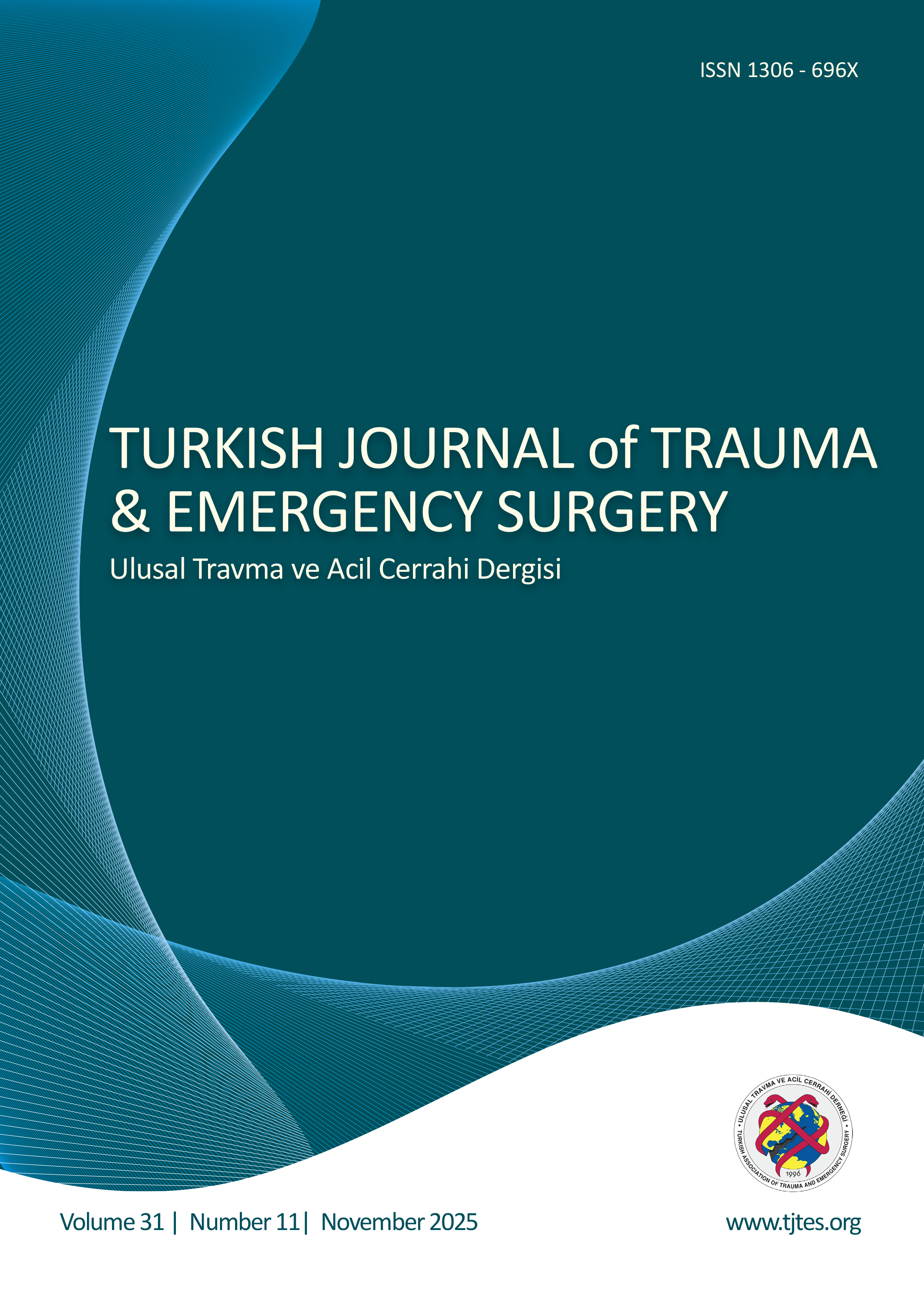Hızlı Arama
Künt boyun travmasına bağlı vertebral arteriovenöz fistül: Olgu sunumu
Durmuş Oğuz Karakoyun1, Ali Yılmaz1, Oğuzhan Uzlu1, Ergun Dağlıoğlu2, Hasan Serdar Işık11Ordu Üniversitesi Tıp Fakültesi, Nöroşirürji Anabilim Dalı, Ordu2Ankara Şehir Hastanesi, Nöroşirürji Kliniği, Ankara
Vertebral arterin arteriyovenöz fistüllerine (AVF) genellikle iyatrojenik ve penetran travmalar neden olur. Vertebral AVF, künt servikal travmadan sonra nadiren görülür. Altmış beş yaşında erkek hasta yaklaşık üç metre yükseklikten düştüğü için acil servise başvurdu. Nörolojik muayenesinde; sol üst ekstremitede zayıflık ve sol kulakta kulak çınlaması vardı. Servikal bilgisayarlı tomografi (BT) incelemesinde Hangmans kırığı, C3 vertebra korpus kompresyon kırığı ve C1 anterior ark kırığı görüldü. C1-2 transvers foramenleri kırık nedeniyle ayrışma ve sol C3-4 transvers foramenlerinde de kırık vardı. Servikal manyetik rezonans görüntülemede (MRG), omurilikte C2 korpus düzeyinde bir kontüzyon varlığı gözlendi. Vertebral arterin MRG anjiyografi incelemesi ile sol vertebral arterin V2-3 segment seviyesinde bir AVF geliştirdiği belirlendi. İnstabil vertebra kırıkları için posterior yaklaşımla stabilizasyon uygulandı. Daha sonra vertebral AVF bir stent/coil kullanılarak endovasküler olarak kapatıldı. Cerrahi ve endovasküler te-daviden sonra nörolojik defektte düzelme görüldü. İşlemle ilgili herhangi bir komplikasyon görülmedi. Üst servikal travmalarda transvers foramenler, özellikle değerlendirilmelidir. Vertebral arter görüntülemesi, vertebra arter hasarının iyatrojenik olup olmadığını belirlemek için kırık hattında bir ayırma varlığında instabilite cerrahisi öncesinde yapılmalıdır.
Anahtar Kelimeler: Endovasküler tedavi, künt boyun travması; vertebral AVF.Vertebral arteriovenous fistula due to blunt neck trauma: A case report
Durmuş Oğuz Karakoyun1, Ali Yılmaz1, Oğuzhan Uzlu1, Ergun Dağlıoğlu2, Hasan Serdar Işık11Department of Neurosurgery, Ordu University Faculty of Medicine, Ordu-Turkey2Department of Neurosurgery, Ankara City Hospital, Ankara-Turkey
The arteriovenous fistulas (AVFs) of the vertebral artery are usually caused by iatrogenic and penetrating traumas. Vertebral AVF is rarely seen after blunt cervical trauma. A 65-year-old male patient applied to the emergency clinic due to falling from a height of about 3 m. In his neurological examination, he had weakness in the left upper limb and tinnitus in the left ear. The cervical computed tomog-raphy examination showed a Hangmans fracture, a C3 vertebra corpus compression fracture, and a C1 anterior arch fracture. There was a separation on the C1-2 transverse foramen due to the fracture, and there was a fracture in the left C3-4 transverse foramen. In cervical magnetic resonance imaging (MRI), the presence of a contusion in the spinal cord at the C2 corpus level was observed. Through an MRI angiography examination of the vertebral artery, it was determined that the left vertebral artery had developed an AVF at the V2-3 segment level. Stabilization surgery was performed with a posterior approach for unstable vertebrae. Then, vertebral AVF was then closed endovascularly using a stent coil. Improvement in neurological deficit was seen after surgery and endovascular treatment. There were no complications related to the procedure. Transverse foramen should be carefully evaluated, especially in the upper cervical trauma. Vertebral artery imaging should be performed before instability surgery in the presence of a separation in the fracture line to determine whether the damage to the vertebral artery is iatrogenic.
Keywords: Blunt neck trauma, endovascular treatment; vertebral arteriovenous fistulas.Makale Dili: İngilizce





